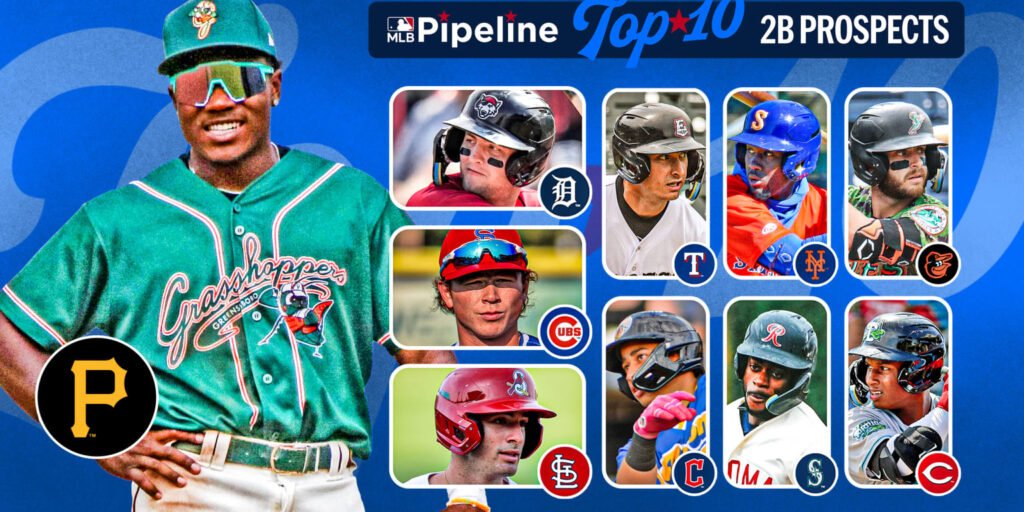Introduction to MLB Prospect Rankings
The world of Major League Baseball is constantly evolving, and at the heart of this evolution lies a crucial element: MLB Prospect Rankings. These rankings serve as a guiding compass for teams looking to unearth the next big talent. As organizations strive to fill their rosters with promising players, understanding these rankings has never been more important.
From scouting reports to player evaluations, every aspect plays a role in shaping team strategies. Teams are building lineups and creating futures based on data and insight derived from prospect rankings. Whether you’re an avid fan or someone curious about how baseball operations work behind the scenes, grasping the significance of these rankings offers fascinating insights into how franchises make decisions that can impact seasons for years to come. Buckle up as we dive deep into how MLB Prospect Rankings shape team dynamics and decision-making processes!
How Prospect Rankings Affect Team Strategies

MLB prospect rankings play a crucial role in shaping team strategies. Teams closely analyze these rankings to identify potential stars who can elevate their performance.
When teams draft players, they consider both immediate needs and long-term goals. High-ranking prospects often become focal points of rebuilding efforts or championship pushes. This strategic approach allows teams to build around young talent, fostering a competitive environment.
Moreover, accurate prospect assessments help organizations make informed trades or free-agent decisions. By understanding the strengths and weaknesses of ranked players, management can craft deals that benefit overall team dynamics.
Scouting departments also align their focus based on these rankings. They adjust their evaluations and prioritize resources toward top-tier prospects to maximize future success.
As player development evolves, so too do strategies surrounding prospect utilization. Embracing advanced analytics enhances decision-making processes linked to MLB prospect rankings.
The Importance of Scouting and Drafting Top Prospects
Scouting and drafting top prospects is a cornerstone of building a successful MLB franchise. Teams invest significant resources in scouting to identify players who possess the potential to excel at the highest level.
A keen eye for talent can distinguish between an average player and a future star. Scouts analyze various factors, including performance metrics, physical attributes, and mental toughness. It’s about more than just statistics; it’s about envisioning how these young athletes will develop over time.
Draft day becomes a pivotal moment for franchises. Making informed decisions can change the trajectory of a team’s future. Selecting the right prospect bolsters on-field performance and shapes fan engagement and revenue opportunities.
Teams that prioritize scouting often find hidden gems in unexpected places. These players become essential pieces of championship-caliber rosters, proving that effective scouting is invaluable in today’s competitive landscape.
Case Studies: Successful Teams Utilizing Prospect Rankings

The Houston Astros have become a model franchise in recent years. Their success is largely attributed to their savvy use of MLB Prospect Rankings. By strategically selecting high-value prospects, they built a core leading to multiple playoff appearances and a World Series title.
Similarly, the Atlanta Braves have redefined their approach through effective scouting. They focused on homegrown talent by leveraging prospect rankings for drafting and trades. This strategy has paid off, with players like Ronald Acuña Jr. and Ozzie Albies propelling the team forward.
Another example is the San Diego Padres, who aggressively pursued top-ranked prospects through trades and drafts. Their commitment to developing young talent has transformed them into serious contenders in the National League.
These teams illustrate how utilizing MLB Prospect Rankings can create competitive advantages that lead to sustained success on the field.
Potential Risks and Drawbacks of Relying on Prospect Rankings
While MLB prospect rankings offer valuable insights, they aren’t foolproof. Over-reliance on these lists can lead teams to overlook hidden gems that don’t fit conventional molds.
Players ranked highly might falter under pressure in the big leagues. A stellar college or minor league performance doesn’t guarantee higher-level success. The transition can be daunting, and expectations often weigh heavily.
Additionally, not all scouting reports are created equal. Biases can creep into evaluations, skewing team strategies based on incomplete data or subjective opinions.
Injuries also pose a significant risk. A top-ranked prospect could suffer setbacks that alter their trajectory dramatically. Teams might invest heavily only to see their plans derailed by unforeseen circumstances.
Balancing rankings with comprehensive scouting is crucial for informed decision-making in player development and team construction.
The Future of MLB Prospect Rankings and Team Strategies
The landscape of MLB Prospect Rankings is evolving rapidly. Data analytics are becoming more sophisticated, offering teams deeper insights into player potential. This evolution means that traditional scouting methods must adapt.
Artificial intelligence and machine learning could soon play a significant role in evaluating prospects. By analyzing vast datasets, these technologies can identify trends and predict future performance with unprecedented accuracy.
Teams will likely invest heavily in technology to refine their strategies. The goal is to uncover hidden gems that might otherwise go unnoticed.
Furthermore, as the game evolves, so will the criteria for ranking players. Factors like adaptability to different playing conditions or mental resilience may become essential metrics.
This shift promises exciting changes ahead for both teams and fans alike. Integrating modern techniques presents opportunities to reshape how franchises build their rosters long-term.
Conclusion
MLB Prospect Rankings hold significant sway in baseball. They serve as a barometer for evaluating young talent and shape the strategic decisions teams make moving forward. Organizations can build robust rosters that align with their long-term goals by understanding and implementing these rankings.
Teams that prioritize scouting and draft strategies based on prospect rankings often find themselves ahead of the curve. The ability to identify rising stars before they hit their peak can be a game changer. Successful franchises demonstrate how effectively leveraging this information leads to sustained success.
However, while there are undeniable advantages, relying solely on MLB Prospect Rankings comes with risks. Player development is complex, and external factors can unpredictably impact performance. Teams must balance data-driven insights with instinctive decision-making.
Looking ahead, MLB Prospect Rankings will continuously evolve alongside technology and analytics in sports scouting. As teams refine their approaches to player evaluation, we may witness groundbreaking changes in how prospects are assessed and integrated into major league rosters.
The landscape of Major League Baseball is ever-changing, driven by emerging talents and innovative strategies shaped by prospect evaluations. Keeping an eye on these developments can provide fans—and aspiring analysts—with insight into what makes a successful team thrive in the competitive arena of professional baseball.





Pingback: How TreeLeftBig.shop is Making a Difference in the Fight